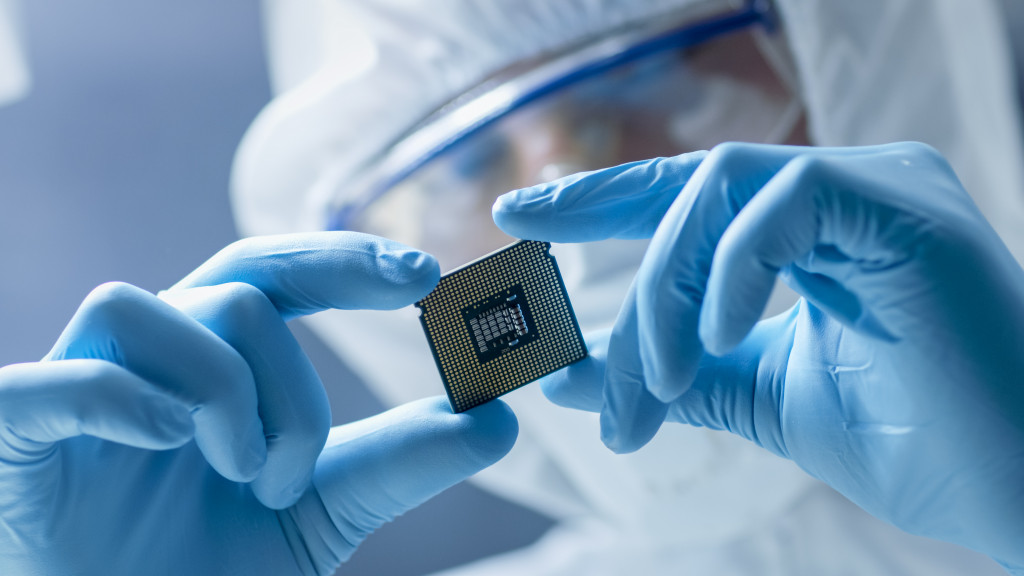- Technological advancements have allowed the manufacturing industry to streamline processes and increase productivity.
- Technologies such as Overall Equipment Effectiveness (OEE) solutions are being used to gather real-time data and optimize supply chain management.
- Virtual and Augmented reality is used in the manufacturing industry for employee training and product design simulation.
- Additive Manufacturing (3D printing) is revolutionizing how manufacturers create products.
The manufacturing industry is constantly evolving and developing to provide better, faster, and more cost-effective solutions to businesses and consumers alike. Technological advancements have allowed the industry to streamline processes, increase productivity, reduce waste, and improve the quality of products.
This guide will explore some of the latest advancements in the manufacturing industry and how they are changing how things are made.
Overall Equipment Effectiveness Formula
The manufacturing industry has seen tremendous advancements in recent years. Digital technologies, like Overall Equipment Effectiveness (OEE) solutions, have enabled business owners to quickly identify operational problems and assess the productivity of their machines. OEE solutions provide valuable insights into the health of their production systems, allowing them to make informed decisions faster and with greater accuracy.
Internet of Things

The Internet of Things (IoT) is a web of physical objects, automobiles, household appliances, and other items integrated with electronics, software, sensors, and connectivity. This allows these gadgets to connect and share data across different networks.
In manufacturing, IoT is being used to gather real-time data from equipment, optimize supply chain management, and monitor quality control. IoT can also track inventory levels and manufacturing metrics to help businesses make informed decisions and reduce waste.
Virtual and Augmented Reality
Virtual and Augmented reality is being used in the manufacturing industry to improve training and reduce errors in production. Using these technologies, employees can be trained on complex machines and processes in a safe and controlled environment, reducing the risk of accidents and errors. Virtual and Augmented reality can also be used to design products and simulate how they look and function before manufacturing.
Additive Manufacturing
Additive manufacturing is a rapidly growing industry that has revolutionized product creation. Also known as 3D printing, this technology allows for the design of complex shapes and structures that were previously impossible to make with traditional manufacturing methods.
In recent years, additive manufacturing has advanced to the point where it is now a viable production option for many industries, including aerospace, automotive, and medical.
The Origins of Additive Manufacturing
The origins of additive manufacturing date back to the early 1980s when Charles Hull invented the first 3D printer. This early technology used stereolithography, which involved a laser to cure a liquid resin into a solid object.
Over the next few decades, additive manufacturing technology continued to advance, with new techniques such as fused deposition modeling (FDM) and selective laser sintering (SLS) emerging. These techniques allowed for the creation of more robust and complex parts and opened up new possibilities for manufacturing.
Additive Manufacturing Today
Today, additive manufacturing technology has advanced beyond prototyping and is now used in production. Industries such as aerospace and automotive are using additive manufacturing to create lighter and more efficient parts, while the medical industry uses additive manufacturing to develop personalized implants and prosthetics.
One of the main advantages of additive manufacturing is its ability to create parts quickly and cheaply. The ability to produce pieces on demand means companies can reduce inventory and respond rapidly to changing market demands.
Artificial Intelligence
Artificial Intelligence (AI) is used in manufacturing to improve processes and reduce costs. AI can analyze data and provide insights to help businesses optimize production lines, reduce downtime, and increase productivity.
It can also be used for predictive maintenance, where the AI system can detect potential issues before they occur and alert maintenance teams to prevent equipment breakdowns.
Nanotechnology

Nanotechnology is a term that refers to the manipulation of matter on a molecular and atomic level. It is an emerging field that has transformed several industries, including manufacturing.
The manufacturing industry has embraced nanotechnology as it has considerable benefits in production, including increased product quality, improved manufacturing efficiency, and new product capabilities.
Advantages of Nanotechnology in Manufacturing
Nanotechnology offers numerous benefits in the manufacturing industry. One significant advantage is increased product quality. By manipulating matters on a molecular level, manufacturers can produce highly homogeneous materials necessary for making electronic products.
Nanotechnology in Manufacturing Risks
While nanotechnology has many advantages in the manufacturing industry, it also poses potential risks. One significant concern is its effect on human health and the environment. Nanoparticles used in manufacturing can have highly toxic effects on human health and the environment, especially when released into the air, water, and soil.
The Bottom Line
In conclusion, the manufacturing industry is constantly evolving, driven by technological advancements changing how products are made. From additive manufacturing to the Internet of Things, these advancements improve efficiency, reduce costs, and allow for more innovative designs and products. As we look to the future, it is clear that the manufacturing industry will continue to advance, providing new opportunities for growth and innovation in the global economy.



